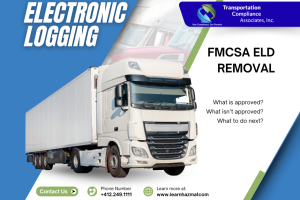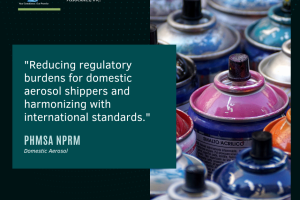Dont Forget Ya Paperwork.

How to Prevent 5 Common Shipping Errors
#5. Not including a GOOD 24-hour emergency number
Per the regulations (49 CFR section 172.604 (c)), the emergency number must be:
- Monitored at all times the hazardous material is in transportation, including storage incidental to transportation
- The telephone number of a person who is either knowledgeable of the hazardous material being shipped and has comprehensive emergency response and incident mitigation information for that material, or has immediate access to a person who possesses such knowledge and information.
It is not uncommon to find the number of an employee who may be knowledgeable of the product in question, but unable to monitor the product and their phone 24 hours a day while the product is in transport. Another risk of having an employee answer the phone for an incident and not being knowledgeable of the product in question. That is why many companies opt for a 24-hour service like CHEMTREC. Not only do they have a 24-Hour call center, but they have toxicology and medical specialists on hand for all your incident needs. The regulations are not designed to have one or the other, but both to satisfy requirement.
#4. Not Identifying a Hazardous Substance
When a single package meets, or exceeds the amounts listed in Appendix A of 49 CFR 172.101 Table 1 and Table 2, it must have the letters “RQ†placed before or after the basic description, or in the optional HM (hazmat) column. Failure to do so will end up in severe penalties. The “RQ†stands for Reportable Quantity. When a substance has a certain amount of a hazardous substance within its make-up, a spill or accident would require notification of the National Response Center due to its hazardous nature. If the letters RQ are missing from the shipping papers it is easy to see how this could be detrimental to many involved with the incident.
#3. Inserting Extra Information
Aside from the afore-mentioned exception, adding extra information into the basic description is strictly prohibited. Often, you will see common errors such as product names, SKU numbers, and even package quantities within the description. Per the regulations (49 CFR 172.202), the “Basic Description†must be in the following order:
- UN/NA Identification Number
- Proper Shipping Name (PSN)
- Hazard Class (subsidiary hazard class in parenthesis when applicable)
- Packing Group (indicated in Roman Numerals)
Another exception to adding more information in the basic description would be when the letter “G†is in Column 1 of the 49 CFR 172.101 Table. This designation means the PSN must be supplemented with the technical name of the hazard that makes up most the substance. If there are more than 2 substances that make up the hazard for any one hazardous material, the 2 most dominate hazards must be listed following the PSN. For instance, “Flammable liquid n.o.s. (acetone, toluene) would be the proper way to write out the PSN.
#2 Incorrect Proper Shipping Name
Within the 49 CFR 172.101 table, there are 3,000 “allowable†names to select a Proper Shipping Name (PSN) from. The Department of Transportation (DOT) makes it pretty cut and dry when selecting a PSN. If it is not included in said table, it is a violation. The PSN must be accurate and specific hence the incredibly large table provided within 49 CFR 172.101. Simply listing a chemical as “Draino†instead of sodium or potassium hydroxide or “Nail Polish Remover†instead of Acetone would be considered a violation. This is because Draino and nail polish remover is a bit vague and not the most accurate or specific description of the hazardous material.
#1 Omitting Shipping Papers Completely
Although, this one seems like a no brainer in 2017 there were 773 violations for offering hazardous materials without preparing shipping papers. As in, NONE AT ALL!
Per JJ Keller
“The data is derived from a snapshot of the Federal Motor Carrier Safety Administration’s Motor Carrier Management Information System as of January 26, 2018. The numbers may rise as the agency receives additional data.â€
I can only assume the thought process here is “if I don’t have shipping papers, I can’t mess them up†or complete ignorance. While some may think, this is a good idea, it is in fact a terrible idea. The cost of each violation per incident per day will be far greater than taking the necessary steps to ensure proper shipping papers are complete and accurate. As for those who subscribe to the notion ignorance is bliss because “it’s what we have always done,†they also say ignorance is no excuse of the law.
To ensure your company is not inadvertently making one of these common errors contact us at Learnhazmat.com or give us a call at (724) 899-4100. One of our team members will help you decide what industry leading training and compliance program best suits your needs. You can also give us a like, share, or review at one of our many social media outlets at Facebook, LinkedIn, and Twitter. If you enjoyed yourself, don’t forget to check out our newsletter. There you can find more articles like this on top of industry updates and exclusive offers.
Tag:49 CFR, HAZMAT, Shipping Papers, Training




